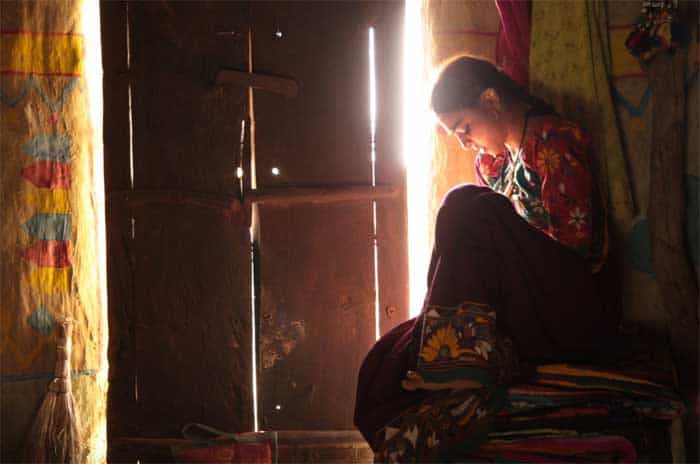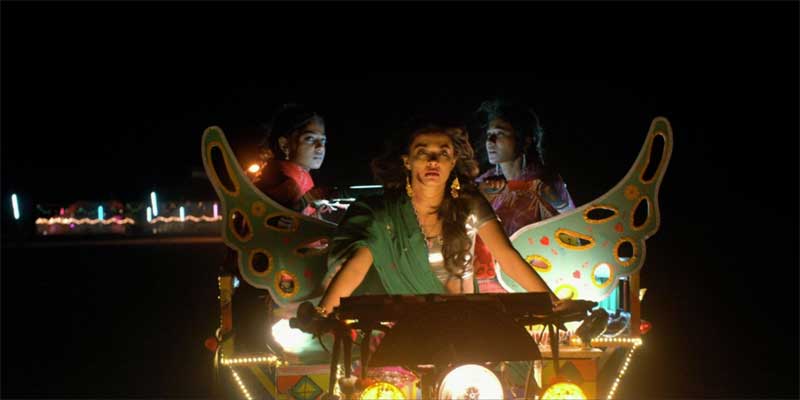Parched is from India, beautifully directed by Leena Yadav. It’s a visual treat while being a heartbreaking look at the lives of women in a brutal patriarchal society. There are some spoilers ahead.
The film tells the story of four struggling women with no control over their lives. They live in a parched desert and suffer physical and sexual abuse from the men around them. They are devalued, not heard, and not respected. I don’t think the lives of women in America are much better.
It’s a story as old as patriachy: men only hurt themselves by keeping women as second class citizens. The one man in the village who values women (Sumeet Vyas) is beaten by the other men because he helps the women earn money – more money than the men – by selling their lovely handcrafted textiles.
It’s easy to see how the social rules in Indian society (as opposed to our own society, in which we are often blindly immersed) work to keep women subjected. The women enforce the rules made by the men – women who read make bad wives, women who don’t have children bring shame to their families, women who don’t want to marry bring shame to their families, women who are smarter than men should be shunned.
The four women are Lajjo (Radhika Apte), Rani (Tannishtha Chatterjee), Bijli (Surveen Chawla) and young Janaki (Lehar Khan).
Rani spends far too much on the dowry of Janaki as a bride for her son Gulab (Riddhi Sen). Neither of them want the marriage. Gulab deals by staying drunk and visiting whores. Janaki sneaks longing glances at a boy from the school where she went. He brings her books.
Lajjo is married to a brutal man who blames her barrenness on her, even though he knows it’s his problem.
Bijli is a prostitute that both Rani and Lajjo know and love. She visits the village once a year.
The story begins at the time Bijli is around. By the end, it’s the time of year when the village has a big festival celebrating the female and symbolically burning every trouble from the past year. This festival is a fitting symbol for the events in the story.
Several times, the women take a motorcycle powered wagon decorated with lights and wings from where Bijli works. They run off together for hours at a time and support each other in their struggles and dreams. The scenes with the women alone and away from men are light and full of laughter and truth.

Any tenderness the women find in their lives comes from each other. They care for each other when they are hurt. The one thing they don’t talk about or act on completely is the physical attraction between them. They feel it, they come close but veer away. The taboo is strong.
One way or another, these women find a way to be free. They literally let their hair down. Their path is no easier where they are going, but they are going.

Visually, the film is spectacular. The color palette of the dry countryside, the beautiful women, the lovely costumes and decorations the women create for their homes, the lighting – it’s rich and perfectly shot.
The film is available on Netflix, Amazon Video, iTunes, and YouTube. I absolutely recommend it.
The trailer for Parched was in an earlier post, along with some other information.

This will be a difficult film for many men to view. It is true women are not completely liberated even here. Still so much to do!
Men who do watch it will be the men who get it.
Pingback: Recommended Foreign Language Films and TV Series - Old Ain't Dead